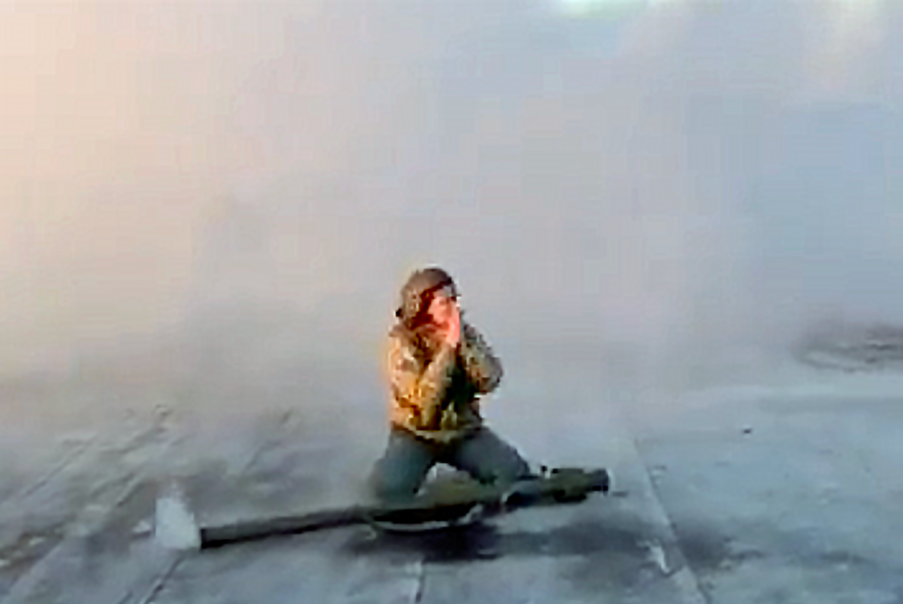For nearly 20 years, the Israeli defense manufacturer Rafael has worked with the Israeli Defense Forces (IDF) and, more recently, its US counterparts to develop High Energy Laser (HEL) weapons.
This led to the development of the “Magen Or” (Iron Beam) anti-missile system, which was slated for introduction in 2025, but has been fast-tracked to defend against missile attacks by Hamas and others.
JOIN US ON TELEGRAM
Follow our coverage of the war on the @Kyivpost_official.
Ukraine has been asking Israel for Iron Beam and other anti-missile systems for the past year.
Following the demonstration of a prototype equipment at a defense exhibition in Singapore in 2014 Israel deployed extensive manpower and financial resources into making the weapon system a reality.
Research was primarily aimed at increasing the power, range and accuracy of the laser, which would enable the energy beam to remain coherent enough to achieve target penetration at the desired operational distance.
In parallel to that, development has advanced on target detection and acquisition, as well as effective stand-alone power generation for the laser and the weapons system.
Israel carried out extensive successful live-fire tests against drones, mini-drones, mortars, rockets and anti-tank missiles in flight in early 2022. The Iron Beam system was officially unveiled at February’s International Defense Exhibition (IDEX 23) in Abu Dhabi, along with elements of Israel’s Iron Dome air defense system, which the HEL weapon is designed to augment.

Russian Ammo Depot Hit by Ukrainian Forces in Bryansk Region
Ran Gozali, executive vice president of Rafael’s land and naval division said: “We actually can focus the beam to the diameter of a coin in a 10-kilometer range.”
In December 2022 it was announced that Israel’s Rafael had signed a teaming agreement with the US aerospace giant Lockheed Martin to jointly develop, test and manufacture Iron Beam and other HEL Weapon Systems (HELWS) in the US and Israel.
What can it do?
The replacement of anti-aircraft artillery and missiles by laser technology is still a long way off. Iron Beam was never intended to replace Israel’s Iron Dome or its long-range David’s Sling and Arrow missiles but adds another layer to the country’s multi-tier anti-missile defense capability.
Iron Beam uses a fiber laser, which some commentators assess as using a minimum of 100 kilowatts, to generate a concentrated laser beam capable of destroying an airborne target out to a distance of 7 to 10 kilometers.
The system would work in tandem with conventional anti-missile and air-defense systems using a range of surveillance systems and tracked by vehicle platforms which would select the most appropriate weapons platform to engage the target.
One of Iron Beam’s biggest attractions is cost. Once acquisition costs have been met Iron Beam’s “cost per shot” is negligible, around $3 to $4 each burst. This compares with the $50,000 each for the Iron Dome’s Tamir missile or $3 million for Patriot’s Pace 3 missile.
In addition, as Ukraine has learned the hard way, once an enemy missile is hit by an air-defense missile there is a huge threat of falling debris from both missiles. An HEL strike eliminates most of this secondary danger.
HEL does have some limitations, mainly caused by weather and atmospheric conditions. These conditions significantly affect its ability to operate. Iron Beam’s sensors can be inhibited by fog, rain and clouds.
The laser’s energy itself can be disrupted by rain, smoke, water vapor (clouds) or air-borne particles, eventually losing power and coherence.
Some commentators also feel that the several seconds needed to charge up the laser power makes the system slower to launch than that of a missile, but it also means that several bursts could be fired before missiles could be replaced in the launcher.
Iron Beam is not alone
In March the United States Army took delivery of four Raytheon 50 kilowatt Directed Energy Maneuver-Short Range Air Defense systems, or DE M-SHORAD, mounted on Stryker infantry fighting vehicles.
It was reported that teams from 4th Battalion, 60th Air Defense Artillery Regiment (4-60th ADAR) carried out highly successful capability tests at the Yuma Proving Ground in Arizona.
Raytheon DE M-SHORAD HEL on RCCTO / 4-60th ADAR Stryker
Photo: US Department of Defense
“The delivery of DE M-SHORAD prototypes to the 4-60th ADAR represents a transformational milestone in the US Army’s modernization campaign. It is an achievement that adds what was often thought of as a next-generation capability, now,” stated Col. Gutierrez, project officer for the US Army’s Rapid Capabilities and Critical Technologies (RCCTO) Office.
He added that laser systems will be a game-changer on the contemporary battlefield, a critical component of an integrated, layered, and in-depth air missile defense for division and brigade maneuver formations.
It has been reported that Raytheon is to provide the US air force with a HEL aircraft-borne weapon and that the UK, Germany and France are in the process of field-testing air defense HEL systems for both land and sea deployment.
HEL for Ukraine
In an official request submitted to Israel on Oct. 18, 2022, the Ukrainian government asked for state-of-the-art air defense systems developed by Israel, some of which were not yet operational, according to a letter obtained by the Axios website.
The letter stated that Ukraine “is highly interested in obtaining from Israel (in shortest possible terms) defense systems, in particular: Iron Beam, Barak-8, Patriot, Iron Dome, David’s Sling, Arrow Interceptor and Israeli support in training for Ukrainian operators.”
However, there is no indication that anyone is considering providing Iron Beam or other laser-based air-defense weapons to Ukraine – though many feel they should. Ukraine’s war against Russia has seen the deployment and successful use of a number of modern weapons that were previously unproven in combat.
This would provide an opportunity to not only protect Ukraine’s population from the continuing Russian missile and kamikaze drone attacks, but allow the weapons to be fully tested.
You can also highlight the text and press Ctrl + Enter







